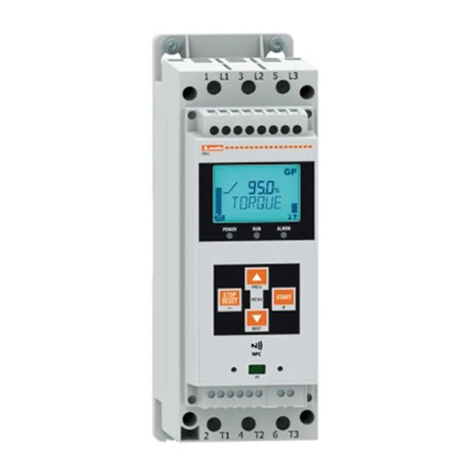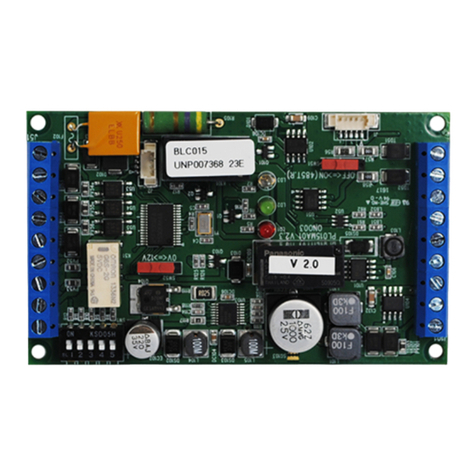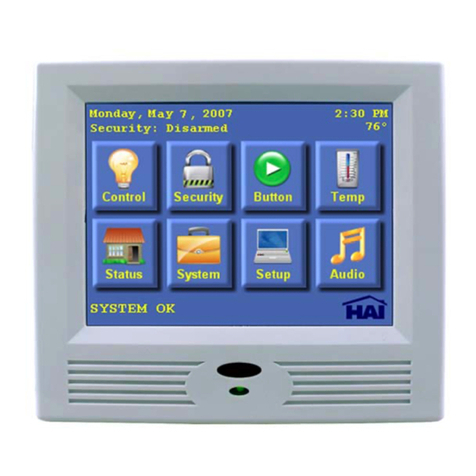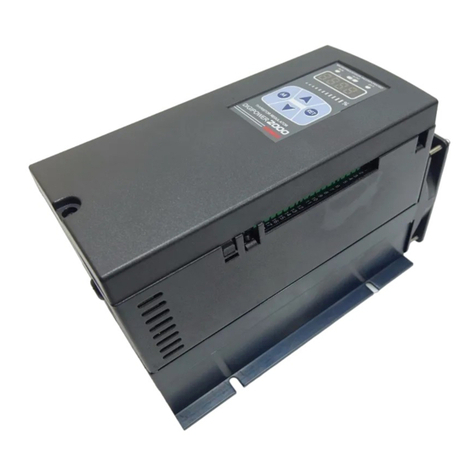FISCHER 4150K User manual

D200151X012
4150K and 4160K Series WizardRII Pressure
Controllers and Transmitters
Contents
Introduction
2. . . . . . . . . . . . . . . . . . . . . . . . . . . . . .
Scope of Manual 2. . . . . . . . . . . . . . . . . . . . . . . . . . . . .
Description 2. . . . . . . . . . . . . . . . . . . . . . . . . . . . . . . . . .
Specifications 2. . . . . . . . . . . . . . . . . . . . . . . . . . . . . . .
Installation
2. . . . . . . . . . . . . . . . . . . . . . . . . . . . . . . .
StandardInstallation 2. . . . . . . . . . . . . . . . . . . . . . . . . .
Panel Mounting 2. . . . . . . . . . . . . . . . . . . . . . . . . . . . . .
Wall Mounting 5. . . . . . . . . . . . . . . . . . . . . . . . . . . . . . .
Pipestand Mounting 5. . . . . . . . . . . . . . . . . . . . . . . . . .
Actuator Mounting 5. . . . . . . . . . . . . . . . . . . . . . . . . . . .
Pressure Connections 5. . . . . . . . . . . . . . . . . . . . . . . .
Supply Pressure 5. . . . . . . . . . . . . . . . . . . . . . . . . . . .
Process Pressure 6. . . . . . . . . . . . . . . . . . . . . . . . . . .
Vent Assembly 8. . . . . . . . . . . . . . . . . . . . . . . . . . . . . .
Controller Operation
8. . . . . . . . . . . . . . . . . . . . .
Proportional-Only Controllers 8. . . . . . . . . . . . . . . .
Adjustments 9. . . . . . . . . . . . . . . . . . . . . . . . . . . . . . . .
Adjustment: Set Point 9. . . . . . . . . . . . . . . . . . . . . .
Adjustment:Proportional Band 9. . . . . . . . . . . . . . .
Calibration:Proportional-Only Controllers 9. . . . . . .
Startup: Proportional-Only Controllers 10. . . . . . . .
Proportional-Plus-Reset Controller 11. . . . . . . . .
Adjustments 11. . . . . . . . . . . . . . . . . . . . . . . . . . . . . .
Adjustment: Set Point 11. . . . . . . . . . . . . . . . . . . .
Adjustment:Proportional Band 11. . . . . . . . . . . . .
Adjustment: Reset 12. . . . . . . . . . . . . . . . . . . . . . .
Adjustment: Anti-Reset Windup 12. . . . . . . . . . . .
Calibration 12. . . . . . . . . . . . . . . . . . . . . . . . . . . . . . .
Calibration:Proportional-Plus-Reset
Controllers 12. . . . . . . . . . . . . . . . . . . . . . . . . . .
Calibration:Anti-Reset Windup 14. . . . . . . . . . . .
Startup: Proportional-Plus-Reset Controllers 14. .
Differential Gap Controllers 14. . . . . . . . . . . . . . . .
Adjustments 15. . . . . . . . . . . . . . . . . . . . . . . . . . . . . .
Adjustment: Set Point 15. . . . . . . . . . . . . . . . . . . .
Adjustment:Proportional Band 15. . . . . . . . . . . . .
Calibration: Differential Gap Controllers 15. . . . . .
Figure 1. Wizard
R
II Controller Yoke-Mounted
on Control Valve Actuator
W3525-1/ IL
Startup: Differential Gap Controllers 16. . . . . . . . .
Transmitter Operation
16. . . . . . . . . . . . . . . . . .
Adjustments 16. . . . . . . . . . . . . . . . . . . . . . . . . . . . . . .
Adjustment: Zero 16. . . . . . . . . . . . . . . . . . . . . . . . .
Adjustment: Span 17. . . . . . . . . . . . . . . . . . . . . . . . .
Calibration: Transmitters 17. . . . . . . . . . . . . . . . . . . .
Startup: Transmitters 18. . . . . . . . . . . . . . . . . . . . . . .
Principle of Operation
18. . . . . . . . . . . . . . . . . .
Proportional-Only Controllers 18. . . . . . . . . . . . . . . .
Proportional-Plus-ResetControllers 18. . . . . . . . . . .
Controllers with Anti-Reset Windup 19. . . . . . . . . . .
Differential Gap Controllers 19. . . . . . . . . . . . . . . . . .
Transmitters 20. . . . . . . . . . . . . . . . . . . . . . . . . . . . . . .
Instruction Manual
Form 5177
March 1999 4150K and 4160K Series

4150K and 4160K Series
2
Contents (Continued)
Maintenance
20. . . . . . . . . . . . . . . . . . . . . . . . . . . . .
Replacing Gauges 20. . . . . . . . . . . . . . . . . . . . . . . . .
Replacing Bourdon Tube 21. . . . . . . . . . . . . . . . . . . .
Replacing Bellows Sensing Element 21. . . . . . . . . .
Changing Proportional or Reset Valve 22. . . . . . . . .
Changing Anti-Reset Windup Differential
Relief Valve (4160KF) 22. . . . . . . . . . . . . . . . . . . .
Changing Action 22. . . . . . . . . . . . . . . . . . . . . . . . . . .
Proportional-Only to a Differential
Gap Controller 22. . . . . . . . . . . . . . . . . . . . . . . . .
Direct to Reverse Action 22. . . . . . . . . . . . . . . . . . .
Relay Repair 24. . . . . . . . . . . . . . . . . . . . . . . . . . . . . .
Replacement 24. . . . . . . . . . . . . . . . . . . . . . . . . . . . .
Relay Disassembly 24. . . . . . . . . . . . . . . . . . . . . . . .
Relay Assembly 25. . . . . . . . . . . . . . . . . . . . . . . . . .
Changing Output Signal Range 25. . . . . . . . . . . . . .
Parts Ordering
26. . . . . . . . . . . . . . . . . . . . . . . . . . .
Parts Kits
26. . . . . . . . . . . . . . . . . . . . . . . . . . . . . . . .
Controller Repair Kits 26. . . . . . . . . . . . . . . . . . . . . . .
Relay Repair Kits 26. . . . . . . . . . . . . . . . . . . . . . . . . .
Relay Replacement Kits 26. . . . . . . . . . . . . . . . . . . . .
Parts List
26. . . . . . . . . . . . . . . . . . . . . . . . . . . . . . . . .
Assemblies 26. . . . . . . . . . . . . . . . . . . . . . . . . . . . . . . .
Common Parts 26. . . . . . . . . . . . . . . . . . . . . . . . . . . .
Relay Assembly 33. . . . . . . . . . . . . . . . . . . . . . . . . . .
Mounting Parts for Panel, Wall, Pipestand
or Actuator Mounting 33. . . . . . . . . . . . . . . . . . . . .
Introduction
Scope of Manual
This instruction manual provides installation, operat-
ing, maintenance, and parts information for the 4150K
and 4160K Series WizardR II pressure controllers
and transmitters shown in figure 1. Refer to separate
instruction manuals for information regarding the con-
trol valve, actuator, and accessories.
Only personnel qualified through training or experience
should install, operate, and maintain this instrument. If
there are any questions concerning these instructions,
contact your Fisher sales office or sales representative
before proceeding.
Description
The 4150K and 4160K Series pneumatic pressure
controllers and transmitters use a bellows or Bourdon
tube sensing element to sense the gauge pressure,
vacuum, compound pressure, or differential pressure
of a liquid or gas. The controller or transmitter output
is a pneumatic pressure signal that can be used to
operate a final control element, indicating device, or
recording device.
Specifications
Specifications for the 4150K and 4160K Series con-
trollers and transmitters are listed in table 1. Table 2
explains available configurations and options.
Installation
Standard Installation
The instruments are normally mounted vertical with
the case/cover as shown in figure 1. If installing the
instrument in any other position, be sure that the vent
opening shown in figure 3 is facing downward.
Panel Mounting
Refer to figure 3.
Cut a hole in the panel surface according to the di-
mensions shown in figure 3. Remove the cap screws
(key 252), brackets (key 251), and vent assembly (key
15). Slide the controller or transmitter into the cutout
and reattach the brackets. Tighten the cap screw lo-
cated in the center of each bracket to draw the case
snugly and evenly against the panel. Reinstall the vent
unless a remote vent will be used.

4150K and 4160K Series
3
Table 1. Specifications
Available Configurations
See table 2
Input Signal(1)
Type: JGauge pressure, Jvacuum, Jcompound
pressure, or Jdifferential pressure of a liquid or
gas
Limits: See table 3 or 4
Output Signal(1)
Proportional-Only or Proportional-Plus-Reset
Controllers and Transmitters:
J3 to 15 psig (0.2 to 1.0 bar) or
J6 to 30 psig (0.4 to 2.0 bar) pneumatic pressure
signal
Differential Gap Controllers:
J0 and 20 psig (0 and 1.4 bar) or
J0 and 35 psig (0 and 2.4 bar) pneumatic pres-
sure signal
Action: Control action is field reversible between
Jdirect (increasing sensed pressure produces in-
creasing output signal) and Jreverse (increasing
sensed pressure produces decreasing output sig-
nal). The suffix R is added to the type number of a
construction specified for reverse action.
Supply Pressure Requirements
See table 5
Steady-State Air Consumption(1)
See figure 2
Supply and Output Connections
1/4-inch NPT female
Common Signal Pressure Conversions
See table 6
Proportional Band(1) Adjustment
For Proportional-Only and Proportional-Plus-
Reset Controllers: Full output pressure change
adjustable from 3 to 100% for a 3 to 15 psig (0.2 to
1.0 bar), or 6 to 100% for a 6 to 30 psig (0.4 to 2.0
bar) of the sensing element range.
Differential Gap Adjustment
For Differential Gap Controllers: Full output pres-
sure change adjustable from 15% to 100% of sens-
ing element range
Reset(1) Adjustment
For Proportional-Plus-Reset Controllers: Adjust-
able from 0.01 to 74 minutes per repeat (100 to
0.01 repeats per minute)
Zero(1) Adjustment (Transmitters Only)
Continuously adjustable to position span of less
than 100% anywhere within the sensing element
range
Span(1) Adjustment (Transmitters Only)
Full output pressure change adjustable from 6 to
100% of sensing element range
Performance
Repeatability(1):0.5% of sensing element range
Deadband(1) (Except Differential Gap Control-
lers(2)): 0.1% of output span
Typical Frequency Response at 100% Propor-
tional Band
Output to Actuator:
0.7 Hz and 110 degree phase
shift with 113 inches3(1850 cm3) volume, actuator
at mid-stroke
Output to Positioner Bellows:
9 Hz and 130 degree
phase shift with 3 to 15 psig (0.2 to 1.0 bar) output
to 2 inches3(33 cm3) bellows
Ambient Operating Temperature Limits
JStandard Construction: –40 to 160_F (–40 to
71_C)
JHigh Temperature Construction: 0 to 220_F
(–18 to 104_C)
Typical Ambient Temperature Operating Influence
Proportional Control only: Output pressure
changes 3.0% of sensing element range for each
50_F (28_C) change in temperature between –40
and 160_F (–40 and 71_C) for a controller set at
100% proportional band
Reset Control only: Output pressure changes
2.0% of sensing element range for each 50_F
(28_C) change in temperature between –40 and
160_F (–40 and 71_C) for a controller set at 100%
proportional band
Transmitters only: Output pressure changes
3.0% of sensing element range for each 50_F
(28_C) change in temperature between –40 and
160_F (–40 and 71_C) for a transmitter set at 100%
span
Options
Case pressure tested to 2 psig (0.14 bar)
Approximate Weight
18 pounds (8.2 kg)
1. This term is defined in ISA Standard S51.1 - 1979.
2. An adjustable differential gap (differential gap controllers) is equivalent to an adjustable deadband.

4150K and 4160K Series
4
Table 2. Available Configurations
TYPE NUMBER(1)
DESCRIPTION
Bourdon Tube
Sensing Element
Bellows Sensing Element
DESCRIPTION
S
ensing Element
(Gauge Pressure
Only) Gauge
Pressure Differential
Pressure
Proportional-only controller 4150K 4152K 4154K
Pro
p
ortional
p
lus reset controller
Without anti-reset windup 4160K 4162K 4164K
Proportional-plus-reset controller With anti-reset windup 4160KF 4162KF - - -
Differential gap controller 4150KS 4152KS - - -
Transmitter 4157K 4158K 4155K
1. The suffix R is added to the type number of a construction specified for reverse action.
Table 3. Bourdon Tube Pressure Ranges and Materials
PRESSURE RANGES(1)
MAXIMUM ALLOWABLE STATIC PRESSURE(2) LIMITS(3)
PRESSURE RANGES
(1)
Standard With Optional Travel Stop(4) MATERIAL
Psig Bar Psig Bar Psig Bar
MATERIAL
0 to 30
0 to 60
0 to 100
0 to 2.0
0 to 4.0
0 to 7.0
30
60
100
2.0
4.0
7.0
48
96
160
3.3
6.6
11
0 to 200
0 to 300
0 to 600(5)
0 to 1000(5)
0 to 14
0 to 20
0 to 40
0 to 70
200
300
600
1000
14
20
40
70
280
420
720
1200
19
29
50
83 316 stainless steel
0 to 1500(5)
0 to 3000
0 to 5000
0 to 100
0 to 200
0 to 350
1500
3000
5000
100
200
350
1650
3300
5500
115
230
380
0 to 8000
0 to 10.000 0 to 550
0 to 700 8000
10,000 550
700 8000
10,000 550
700
1. Range marked on Bourdon tube may be in kPa (1 bar = 100 kPa)
2. This term is defined in ISA Standard S51.1-1979.
3. Bourdon tube may be pressurized to limit shown without permanent zero shift.
4. With travel stop set at 110% of the range.
5. These Bourdon tubes are also available in K-Monel for sour gas service.
Table 4. Bellows Pressure Ranges and Materials
MAXIMUM ALLOWABLE STATIC
PRESSURE(1) LIMITS(2)
PRESSURE RANGES Brass
Construction Stainless Steel
Construction
Psig Bar Psig Bar
Vacuum 0 to 60 inch wc (0 to 150 mbar)
0 to 10 inch Hg (0 to 340 mbar)
0 to 30 inch Hg (0 to 1.0 bar)
20
40
40
1.6
2.8
2.8
---
---
100
---
---
6.9
Compound Pressure 30 inch wc vac. to 30 inch wc (75 mbar vac. to 75 mbar)
15 inch Hg vac. to 7.5 psig (500 mbar vac. to 500 mbar)
30 inch Hg vac. to 15 psig (1.0 bar vac. to 1.0 bar)
20
40
40
1.4
2.8
2.8
---
100
100
---
6.9
6.9
Gauge Pressure
Positive pressure
0 to 60 inch wc (0 to 150 mbar)
0 to 100 inch wc(3) (0 to 250 mbar)
0 to 140 inch wc(4) (0 to 350 mbar)
0 to 5 psig (0 to 0.35 bar)
0 to 7.5 psig (0 to 0.5 bar)
20
20
40
40
40
1.4
1.4
2.8
2.8
2.8
---
---
---
---
---
---
---
---
---
---
Positive
ressure
0 to 10 psig (0 to 0.7 bar)
0 to 15 psig (0 to 1.0 bar)
0 to 20 psig (0 to 1.4 bar)
0 to 30 psig (0 to 2.0 bar)
40
40
40
40
2.8
2.8
2.8
2.8
---
100
---
100
---
6.9
---
6.9
Differential Pressure(5)
0 to 80 inch wc (0 to 300 mbar)
0 to 10 psi (0 to 0.7 bar)
0 to 20 psi (0 to 1.4 bar)
0 to 30 psi (0 to 2.0 bar)
20
40
40
---
1.4
2.8
2.8
---
---
---
---
100
---
---
---
6.9
1. This term is defined in ISA Standard S51.1-1979.
2. Bellows may be pressured to limit shown without permanent zero shift.
3. Type 4158K transmitter only.
4. Except Type 4158K transmitter.
5. The overrange limit for these sensing elements is a differential pressure equal to the maximum allowable static pressure limit.

4150K and 4160K Series
5
Figure 2. Steady-State Air Consumption
SUPPLY AIR FLOW, SCFH
PROPORTIONAL BAND
SETTING OF 0 OR 10
PROPORTIONAL BAND
SETTING OF 5
OUTPUT, PSIG
3 TO 15 PSIG (0.2 TO 1.0 BAR) OUTPUT SIGNAL RANGE
SUPPLY AIR FLOW, SCFH
OUTPUT, PSIG
6 TO 30 (0.4 TO 2.0 BAR) OUTPUT SIGNAL RANGE
PROPORTIONAL BAND
SETTING OF 5
PROPORTIONAL BAND
SETTING OF 0 OR 10
NOTES
TO CONVERT PSIG TO BAR, MULTIPLY BY 0.06895.
SCFH—STANDARD CUBIC FEET PER HOUR (60_F AND 14.7 PSIA).
TO CONVERT TO NORMAL M3/HR—NORMAL CUBIC METERS PER HOUR (0_C AND
1.01325 BAR, ABSOLUTE), MULTIPLY BY 0.0268
1
1
1
2
2
2
A7242/ IL
Wall Mounting
Refer to figure 3.
Drill four holes in the wall using the dimensions shown
in figure 3. In the bracket (key 251) are 11/32-inch (8.7
mm) diameter holes. Back out the cap screw located
in the center of each bracket. (The screws are used
for panel mounting but are not required for wall mount-
ing.) If tubing runs through the wall, drill holes in the
wall to accommodate the tubings. Figure 3 shows the
pressure connection locations in the back of the case.
Mount the controller to the bracket using the four cap
screws (key 252) provided. Attach the bracket to the
wall, using suitable screws or bolts.
Pipestand Mounting
Refer to figure 3.
Attach the spacer spools (key 228) and the mounting
plate (key 213) to the controller with cap screws, lock
washers, and nuts (keys 215, 221, and 216). Attach
the controller to a 2-inch (nominal) pipe with pipe
clamps (key 250).
Actuator Mounting
Refer to figure 4.
Controllers specified for mounting on a control valve
actuator are mounted at the factory. If the instrument
is ordered separately for installation on a control valve
actuator, mount the instrument according to the follow-
ing instructions.
Mounting parts for the different actuator types and
sizes vary. Two typical actuator-mounting installations
are shown in figure 4; see the parts list for parts re-
quired for the specific actuator type and size involved.
Attach the spacer spools (key 228) and the mounting
plate (key 213) to the controller with machine screws,
lock washers, and nuts (keys 215, 221, and 216).
Attach the mounting bracket to the actuator yoke with
cap screws (key 222) and, if needed, spacer spools.
On some designs, the mounting bracket is attached to
the actuator diaphragm casing rather than to the yoke.
Pressure Connections
WARNING
To avoid personal injury or property
damage resulting from the sudden re-
lease of pressure, do not install any sys-
tem component where service condi-
tions could exceed the limits given in
this manual. Use pressure-relieving de-
vices as required by government or ac-
cepted industry codes and good engi-
neering practices.
All pressure connections on 4150K and 4160K Series
instruments are 1/4-inch NPT female. Use 1/4-inch (6
mm) or 3/8-inch (10 mm) pipe or tubing for supply and
output piping. The pressure connection locations are
shown in figure 3.
Supply Pressure
WARNING
Personal injury or property damage may
occur from an uncontrolled process if
the supply medium is not clean, dry,
oil-free, air or a non-corrosive gas. In-
dustry instrument air quality standards
describe acceptable dirt, oil, and mois-
ture content. Due to the variability in na-
ture of the problems these influences
can have on pneumatic equipment,
Fisher Controls has no technical basis
to recommend the level of filtration
equipment required to prevent perfor-

4150K and 4160K Series
6
Figure 3. Panel, Wall, and Pipestand Mounting
2 INCH
(NOMINAL)
PIPE
VENT ASSEMBLY
(KEY 15)
FOUR HOLES
FOR WALL
MOUNTING
CUTOUT FOR
PANEL MOUNTING
11/32
(8.7)
MOUNTING
HOLES
INCH
(mm)
NOTES:
1. ALL CONNECTIONS ARE 1/4 INCH NPT FEMALE.
HIGH-PRESSURE CONNECTION FOR DIFFERENTIAL-
PRESSURE UNITS.
LOW-PRESSURE CONNECTION FOR DIFFERENTIAL-
PRESSURE UNITS.
2
3
B1563-2/ IL
mance degradation of pneumatic equip-
ment. A filter or filter regulator capable
of removing particles 40 microns in di-
ameter should suffice for most applica-
tions. Use of suitable filtration equip-
ment and the establishment of a
maintenance cycle to monitor its opera-
tion is recommended.
Supply pressure must be clean, dry air or noncorrosive
gas that meets the requirements of ISA Standard
S7.3-1975 (R1981). Use a suitable supply pressure
regulator to reduce the supply pressure source to the
normal operating supply pressure shown in table 5.
Connect supply pressure to the SUPPLY connection
at the back of the case.
If operating the controller or transmitter from a high
pressure source [up to 2000 psig (138 bar)], use a
high pressure regulator system, such as the Type
1367 High Pressure Instrument Supply System. For
Type 1367 system installation, adjustment, and main-
tenance information, see the separate instruction
manual.
Process Pressure
WARNING
To avoid personal injury or property
damage resulting from the sudden re-
lease of pressure when using corrosive
media, make sure the tubing and instru-
ment components that contact the cor-
rosive medium are of suitable noncorro-
sive material.

4150K and 4160K Series
7
Table 5. Supply Pressure Requirements
OUTPUT NORMAL OPERATING SUPPLY MAXIMUM ALLOWABLE SUPPLY
PRESSURE TO PREVENT INTERNAL
OUTPUT
SIGNAL RANGE
NORMAL
OPERATING
SUPPLY
PRESSURE(1) PRESSURE TO PREVENT INTERNAL
PART DAMAGE
Psig 3 to 15 or 0 and 20 (differential gap) 20 40
Psig 6 to 30 or 0 and 35 (differential gap) 35 40
Bar
0.2 to 1.0 or 0 and 1.4 (differential gap) 1.4 2.8
Bar 0.4 to 2.0 or 0 and 2.4 (differential gap) 2.4 2.8
1. If this pressure is exceeded, control may be impaired.
Table 6. Common Signal Pressure Conversions
Psi kPa bar kg/cm2Mps
3
5
6
7
9
20(1)
35
40(1)
50
60
0.2(2)
0.3
0.4
0.5
0.6
0.2
0.3
0.4
0.5
0.6
0.02
0.03
0.04
0.05
0.06
11
12
14
15
18
75
80
95
100(1)
125
0.8
0.8
1.0
1.0(2)
1.2
0.8
0.8
1.0
1.0(3)
1.3
0.07
0.08
0.09
0.10
0.12
20
22
25
27
30
140
150
170
185
200(1)
1.4
1.5
1.7
1.9
2.0(3)
1.4
1.5
1.8
1.9
2.0
0.14
0.15
0.17
0.18
0.20
32
33
35
50
80
220
230
240
345
550
2.2
2.3
2.4
3.4
5.5
2.2
2.3
2.5
3.5
5.6
0.22
0.23
0.24
0.34
0.55
100
150 690
1035 6.9
10.3 7.0
10.5 0.69
1.03
1. Values as listed in ANSI/S7.4.
2. Values as listed in IEC Standard 382.
3. Values rounded to correspond with kPa values.
The pressure connections to the controller depend
upon the type of pressure sensing, gauge or differen-
tial. Gauge pressure controllers use either a Bourdon
tube or bellows as the sensing element, as indicated in
table 2. Differential pressure controllers use two bel-
lows to sense differential pressure.
For gauge pressure instruments: The control pres-
sure block (key 8 in figure 19) has two connections.
Process pressure can be connected either to the
CONTROL connection on the back of the case, or to
the connection on the left side of the case, shown in
figure 3, depending on the instrument application. Plug
the unused connection.
For differential pressure instruments: Connect the
low pressure line to the CONTROL connection on the
side of the case and the high pressure line to the
CONTROL connection on the back of the case as
shown in figure 3.
When installing process piping, follow accepted prac-
tices to ensure accurate transmission of the process
pressure to the controller or transmitter. Install shutoff
valves, vents, drains, or seal systems as needed in
Figure 4. Actuator Mounting
48B6020-A/ DOC
SUPPLY PRESSURE
REGULATOR
SUPPLY PRESSURE
REGULATOR
38B6021-A/ DOC
the process pressure lines. If the instrument is located
such that the adjacent process pressure lines will be
approximately horizontal, the lines should slope down-
ward to the instrument for liquid-filled lines and upward
to instruments for gas-filled lines. This will minimize
the possibility of air becoming trapped in the sensor
with liquid-filled lines or of condensation becoming
trapped with gas-filled lines. The recommended slope
is 1 inch per foot (83 mm per meter).
If a controller is being used in conjunction with a con-
trol valve to control pipeline pressure, connect the pro-

4150K and 4160K Series
8
Figure 5. Proportional-Only Controller Adjustment Locations
PROPORTIONAL BAND
ADJUSTMENT KNOB
PRESSURE-SETTING KNOB
(KEY 36)
PRESSURE-SETTING
DIAL (KEY 38)
FLAPPER (KEY 45)
NOZZLE (KEY 57)
CALIBRATION ADJUSTER (KEY 41)
ADJUSTER SCREWS (KEY 43)
48B6003-A
A6038-1/ IL
cess pressure line in a straight section of pipe approxi-
mately 10 pipe diameters from the valve but away
from bends, elbows, and areas of abnormal fluid velo-
cities. For pressure-reducing service, the process line
must be connected downstream of the valve. For pres-
sure-relief service, the process pressure line must be
connected upstream of the control valve. Install a
needle valve in the process pressure line to dampen
pulsations.
Vent Assembly
WARNING
If a flammable, toxic, or reactive gas is
to be used as the supply pressure me-
dium, personal injury or property dam-
age could result from fire or explosion
of accumulated gas or from contact with
a toxic, or reactive gas. The instrument
case and cover assembly does not form
a gas-tight seal, and when the assembly
is enclosed, a remote vent line, ade-
quate ventilation, and necessary safety
measures should be used. A remote
vent pipe alone cannot be relied upon to
remove all hazardous gas. Vent line pip-
ing should comply with local and re-
gional codes and should be as short as
possible with adequate inside diameter
and few bends to reduce case pressure
buildup.
CAUTION
When installing a remote vent pipe, take
care not to overtighten the pipe in the
vent connection. Excessive torque will
damage the threads in the connection.
The vent assembly (key 15, figure 3) or the end of a
remote vent pipe must be protected against the en-
trance of all foreign matter that could plug the vent.
Use 1/2-inch (13 mm) pipe for the remote vent pipe, if
one is required. Check the vent periodically to be cer-
tain it has not become plugged.
Controller Operation
Proportional-Only Controllers
This section describes the adjustments and proce-
dures for calibration and startup. Adjustment locations
are shown in figure 5 unless otherwise specified. All
adjustments must be made with the cover open. When

4150K and 4160K Series
9
the adjustments and calibration procedures are com-
plete, close and latch the cover.
To better understand the adjustments and overall op-
eration of the controller, refer to the Principle of Op-
eration section in this manual for proportional-only
controllers. Refer also to the schematic diagram in
figure 14.
Adjustments
Adjustment: Set Point
Adjust the pressure-setting knob by turning the knob
clockwise to increase the set point and counterclock-
wise to decrease the set point. Note: The dial setting
and actual process pressure may vary significantly,
especially with a wide proportional band setting.
Adjustment: Proportional Band
To adjust the proportional band, rotate the proportional
band knob to the desired value.
The proportional band adjustment determines the
amount of change in controlled pressure required to
cause the control valve to stroke fully. It may be ad-
justed from 3–100 percent of the nominal sensing ele-
ment pressure rating.
Calibration: Proportional-Only Controllers
Unless otherwise indicated, key number locations are
shown in figure 5.
Provide a process pressure source capable of simulat-
ing the process pressure range of the controller. If an
output pressure gauge is not provided, install a suit-
able pressure gauge for calibration purposes.
Connect a pressure source to the supply pressure reg-
ulator and be sure the regulator is delivering the cor-
rect supply pressure to the controller. The controller
must be connected open loop (Open loop: The control-
ler output pressure changes must be dead ended into
a pressure gauge). The following procedures use a 3
to 15 psig (0.2 to 1.0 bar) output pressure range as an
example. For a 6 to 30 psig (0.4 to 2.0 bar) output
range, adjust the values as appropriate.
1. Complete the above connections and provide a pro-
cess pressure equal to the sensing element range.
2. Rotate the proportional band knob, shown in figure 5,
to 1.5 (15 percent proportional band).
3. Verifythatthecalibrationadjusterscrews(key43)are
at mid-position in the calibration adjuster (key 41) slots.
Depending upon the controller action, perform one or
the other of the following procedures.
For direct-acting controllers:
4. Apply an input pressure equal to thesensing element
lower range value.
5. Rotate the pressure setting knob to the minimum
value.
6. Adjust the nozzle (key 57) until the controller output
pressure is between 8 and 10 psig (0.6 and 0.7 bar).
7. Apply an input pressure equal to thesensing element
upper range value.
8. Rotate the pressure-setting knob to the maximum
value.
Note
When performing the span adjustment
in step 9, do not watch the output gauge
while changing the calibration adjuster.
The change in output is not a good in-
dication of the change in span. While
moving the calibration adjuster, the out-
put pressure may change in the oppo-
site direction than expected. For exam-
ple, while moving the calibration
adjustor to increase span, the output
pressure may decrease. This should be
disregarded since even though the out-
put pressure decreases, the span is in-
creasing .
Loosen one screw only on the calibra-
tion adjuster and move the calibration
adjuster a small amount using the tight
screw as a pivot and retighten the
screw. If the adjustment is repeated sev-
eral times, alternate the loosening of the
two screws to prevent the nozzle from
being misaligned with the flapper. Dur-
ing calibration, always be sure the
nozzle remains perpendicular to the
flapper.
9. If the output is not between 8 and 10 psig, adjust the
controller span by loosening one of the two adjusting
screws (key 43) and move the calibration adjuster (key
41) a small distance as indicated in figure 6.
10. Repeatsteps4 through 9 until no further adjustment
is necessary.
11. Proceed to the startup procedure for proportional
controllers.
For reverse-acting controllers:
4. Apply an input pressure equal to thesensing element
upper range value.

4150K and 4160K Series
10
Figure 6. Direct-Acting Controller Span Adjustment—
Proportional-Only Controllers
IF OUTPUT IS:
BELOW
8 TO 10 PSIG
(0.6 TO 0.7 BAR)
ABOVE
8 TO 10 PSIG
(0.6 TO 0.7 BAR)
MOVE ADJUSTER
LEFT MOVE ADJUSTER
RIGHT
FLAPPER
NOZZLE
NOTE:
3 TO 15 PSIG (0.1 TO 1.0 BAR) OUTPUT SHOWN.
FOR 6 TO 30 PSIG (0.2 TO 2.0 BAR) OUTPUT, ADJUST
VALUES AS APPROPRIATE.
A6154/ IL
5. Rotate the pressure setting knob to the maximum
value.
6. Adjust the nozzle (key 57) until the controller output
pressure is between 8 and 10 psig (0.6 and 0.7 bar).
7. Apply an input pressure equal to thesensing element
lower range value.
8. Rotate the pressure-setting knob to the minimum
value.
Note
When performing the span adjustment
in step 9, do not watch the output gauge
while changing the calibration adjuster.
The change in output is not a good in-
dication of the change in span. While
moving the calibration adjuster, the out-
put pressure may change in the oppo-
site direction than expected. For exam-
ple, while moving the calibration
adjustor to increase span, the output
pressure may decrease. This should be
disregarded since even though the out-
put pressure decreases, the span is in-
creasing.
Loosen one screw only on the calibra-
tion adjuster and move the calibration
adjuster a small amount using the tight
screw as a pivot and retighten the
screw. If the adjustment is repeated sev-
eral times, alternate the loosening of the
Figure7.Reverse-ActingControllerSpan Adjustment—
Proportional-Only Controllers
IF OUTPUT IS:
ABOVE
8 TO 10 PSIG
(0.6 TO 0.7 BAR)
BELOW
8 TO 10 PSIG
(0.6 TO 0.7 BAR)
MOVE ADJUSTER
LEFT MOVE ADJUSTER
RIGHT
FLAPPER
NOZZLE
NOTE:
3 TO 15 PSIG (0.1 TO 1.0 BAR) OUTPUT SHOWN.
FOR 6 TO 30 PSIG (0.2 TO 2.0 BAR) OUTPUT, ADJUST
VALUES AS APPROPRIATE.
A6155-1/ IL
two screws to prevent the nozzle from
being misaligned with the flapper. Dur-
ing calibration, always be sure the
nozzle remains perpendicular to the
flapper.
9. If the output is not between 8 and 10 psig, adjust the
controller span by loosening one of the two adjusting
screws (key 43) and move the calibration adjuster (key
41) a small distance as indicated in figure 7.
10. Repeatsteps4 through 9 until no further adjustment
is necessary.
11. Proceed to the startup procedure for proportional
controllers.
Startup: Proportional-Only Controllers
(General Tuning Guidelines)
Calibrate the controller prior to this procedure.
1. Be sure that the supply pressure regulator is deliv-
ering the proper supply pressure to the controller.
2. Rotate the pressure-setting knob to the desired set
point.
3. Set the proportional band adjustment to 100 per-
cent for fast processes (example: liquid pressure or
liquid flow). For slow processes (example: tempera-
ture), calculate the percentage from the equation
below:
For a slow process, determine the initial proportional
band setting in percent from the following equation:
200 Allowable Overshoot
Pressure Span +P.B.

4150K and 4160K Series
11
Figure 8. Proportional-Plus-Reset Controller Adjustment Locations
RESET ADJUSTMENT KNOB
PROPORTIONAL BAND
ADJUSTMENT KNOB
PRESSURE SETTING KNOB
(KEY 36)
PRESSURE SETTING
DIAL (KEY 38)
ADJUSTER SCREWS (KEY 43)
CALIBRATION ADJUSTER (KEY 41) FLAPPER (KEY 45)
NOZZLE (KEY 57)
48B6002-A
A5433-3/ IL
For example:
200 2 psig
30 psig ^13%
(1.3 proportional band setting)
4. Proportional Action
Disturb the system by tapping the flapper lightly or
change the set point a small amount and check for
system cycling. If the system does not cycle then low-
er the proportional band (raising the gain) and disturb
the system again. Continue this procedure until the
system cycles. At that point, double the proportional
band setting.
Note
Proportional band adjustment affects
the set point. Proportional-only control-
lers will show some offset from set
point depending upon proportional
band setting and process demand. After
adjusting the proportional band, re-zero
by carefully rotating the nozzle (key 57)
until the steady-state process pressure
equals the process pressure knob read-
ing.
This tuning procedure may be too conservative for
some systems. The recommended proportional band
setting should be checked for stability by introducing a
disturbance and monitoring the process.
Proportional-Plus-Reset Controllers
This section describes the adjustments and proce-
dures for calibration and startup. The adjustment loca-
tions are shown in figure 8 unless otherwise specified.
All adjustments must be made with the cover open.
When the adjustments and calibration procedures are
complete, close and latch the cover. To better under-
stand the adjustments and overall operation of the
controller, refer to the Principle of Operation section in
this manual for proportional-plus-reset controllers. Re-
fer also to the schematic diagram in figure 14.
Adjustments
Adjustment: Set Point
Adjust the pressure-setting knob by turning the knob
clockwise to increase the set point and counterclock-
wise to decrease the set point.
Rotate the knob until the indicator points to the desired
set point pressure value. The pressure setting dial will
reflect the desired set point if the controller is accu-
rately calibrated.
Adjustment: Proportional Band
To adjust the proportional band, rotate the proportional
band knob to the desired value.

4150K and 4160K Series
12
The proportional band adjustment determines the
amount of change in controlled pressure required to
cause the control valve to stroke fully. It may be ad-
justed from 3–100 percent of the nominal sensing ele-
ment pressure rating.
Adjustment: Reset
To adjust reset action turn the knob clockwise to de-
crease the minutes per repeat. Turn the knob counter-
clockwise to increase the minutes per repeat. Increas-
ing the minutes per repeat provides a slower reset
action.
The reset adjustment dial is calibrated in minutes per
repeat. By definition, this is the time in minutes re-
quired for the reset action to produce an output
change which is equal to the change produced by pro-
portional control action. This is in effect, the time in
minutes required for the controller to increase (or de-
crease) its output pressure by an amount equal to a
proportional increase (or decrease) caused by a
change in set point or process pressure.
Adjustment: Anti-Reset Windup
The externally mounted differential relief valve can be
mounted to relieve on increasing or decreasing output
pressure.
Calibration
Calibration: Proportional-Plus-Reset Controllers
Unless otherwise indicated, key number locations are
shown in figure 8.
Before starting this procedure:
DProvide a process pressure source capable of
simulating the process pressure range of the control-
ler.
DIf an output pressure gauge is not provided,
install a suitable pressure gauge for calibration pur-
poses. The controller must be connected open loop
(Open loop: The controller output pressure changes
must be dead ended into a pressure gauge).
Note
Type 4160KF and 4162KF (anti-reset
windup) controllers are supplied with
two O-rings (key 367, not shown), an
anti-reset windup cover (key 369, not
shown), and two machine screws (key
368, not shown). Use these parts in the
next step.
1. For controllers with anti-reset windup (Type
4160KF and 4162KF), record the direction of the ar-
row on the anti-reset windup assembly (key 186, in
figure 20). Remove the assembly and install the two
O-rings (key 367, not shown), and cover (key 369, not
shown) supplied with the controller. Secure the cover
with the two machine screws (key 368, not shown)
provided.
2. Connect regulated supply pressure to the control-
ler. Do not exceed the normal operating pressure in
table 5.
3. Rotate the reset knob to 0.01 minutes per repeat
(fastest setting).
4. Rotate the proportional band knob to 1.5 (15 per-
cent proportional band).
5. Verify that the calibration adjuster screws (key 43)
are at mid-position in the calibration adjuster (key 41)
slots.
Depending upon the controller action, perform one or
the other of the following procedures.
For direct-acting controllers:
6. Apply an input pressure equal to thesensing element
lower range value.
7. Rotate the pressure setting knob to the minimum val-
ue.
8. Adjust the nozzle (key 57) until the controller output
pressure is between 8 and 10 psig (0.6 and 0.7 bar).
9. Apply an input pressure equal to thesensing element
upper range value.
10. Rotate the pressure-setting knob to the maximum
value.
Note
When performing the span adjustment
in step 11, do not watch the output
gauge while changing the calibration
adjuster. The change in output is not a
good indication of the change in span.
While moving the calibration adjuster,
the output pressure may change in the
opposite direction than expected. For
example, while moving the calibration
adjustor to increase span, the output
pressure may decrease. This should be
disregarded since even though the out-
put pressure decreases, the span is in-
creasing.
Loosen one screw only on the calibra-
tion adjuster and move the calibration
adjuster a small amount using the tight
screw as a pivot and retighten the

4150K and 4160K Series
13
Figure 9. Direct-Acting Controller Span Adjustment—
Proportional-Plus-Reset Controllers
IF OUTPUT IS:
BELOW
8 TO 10 PSIG
(0.6 TO 0.7 BAR)
ABOVE
8 TO 10 PSIG
(0.6 TO 0.7 BAR)
MOVE ADJUSTER
LEFT MOVE ADJUSTER
RIGHT
FLAPPER
NOZZLE
NOTE:
3 TO 15 PSIG (0.1 TO 1.0 BAR) OUTPUT SHOWN.
FOR 6 TO 30 PSIG (0.2 TO 2.0 BAR) OUTPUT, ADJUST
VALUES AS APPROPRIATE.
A6154/ IL
screw. If the adjustment is repeated sev-
eral times, alternate the loosening of the
two screws to prevent the nozzle from
being misaligned with the flapper. Dur-
ing calibration, always be sure the
nozzle remains perpendicular to the
flapper.
11. If the output pressure is not between 8 and 10 psig,
adjustthecontrollerspanbylooseningoneofthetwoad-
justingscrews(key43)andmovethecalibrationadjuster
(key 41) a small distance as indicated in figure 9.
12. Repeat steps 6 through 11 until no further adjust-
ment is necessary.
13. For controllers with anti-resetwindup (Type 4160KF
and 4162KF), remove the two machine screws, anti-re-
set windup cover, and two O-rings installed in step 1 of
this procedure. Install the anti-reset windup assembly
(key 186) with the arrow pointing in the direction re-
corded in step 1.
14. Proceed to the Startup procedures for proportional-
plus-reset controllers.
For reverse-acting controllers:
6. Apply an input pressure equal to thesensing element
upper range value.
7. Rotate the pressure setting knob to the maximum
value.
8. Adjust the nozzle (key 57) until the controller output
pressure is between 8 and 10 psig (0.6 and 0.7 bar).
9. Apply an input pressure equal to thesensing element
lower range value.
10. Rotate the pressure-setting knob to the minimum
value.
Note
When performing the span adjustment
in step 11, do not watch the output
gauge while changing the calibration
adjuster. The change in output is not a
good indication of the change in span.
While moving the calibration adjuster,
the output pressure may change in the
opposite direction than expected. For
example, while moving the calibration
adjustor to increase span, the output
pressure may decrease. This should be
disregarded since even though the out-
put pressure decreases, the span is in-
creasing.
Loosen one screw only on the calibra-
tion adjuster and move the calibration
adjuster a small amount using the tight
screw as a pivot and retighten the
screw. If the adjustment is repeated sev-
eral times, alternate the loosening of the
two screws to prevent the nozzle from
being misaligned with the flapper. Dur-
ing calibration, always be sure the
nozzle remains perpendicular to the
flapper.
11. If the output pressure is not between 8 and 10 psig,
adjustthecontrollerspanbylooseningoneofthetwoad-
justingscrews(key43)andmovethecalibrationadjuster
(key 41) a small distance as indicated in figure 10.
12. Repeat steps 6 through 11 until no further adjust-
ment is necessary.
13. For controllers with anti-resetwindup (Type 4160KF
and 4162KF), remove the two machine screws, anti-re-
set windup cover, and two O-rings installed in step 1 of
this procedure. Install the anti-reset windup assembly
(key 186) with the arrow pointing in the direction re-
corded in step 1.
14. Proceed to the Startup procedures for proportional-
plus-reset controllers.

4150K and 4160K Series
14
Figure 10. Reverse-Acting Controller Span Adjustment—
Proportional-Plus-Reset Controllers
IF OUTPUT IS:
ABOVE
8 TO 10 PSIG
(0.6 TO 0.7 BAR)
BELOW
8 TO 10 PSIG
(0.6 TO 0.7 BAR)
MOVE ADJUSTER
LEFT MOVE ADJUSTER
RIGHT
FLAPPER
NOZZLE
NOTE:
3 TO 15 PSIG (0.1 TO 1.0 BAR) OUTPUT SHOWN.
FOR 6 TO 30 PSIG (0.2 TO 2.0 BAR) OUTPUT, ADJUST
VALUES AS APPROPRIATE.
A6155-1/ IL
Calibration: Anti-Reset Windup
Controllers with anti-reset windup have a differential
relief valve assembly (figure 20). This relief valve is
set at the factory to relieve at a 5 psi (0.3 bar) pres-
sure difference between the reset bellows pressure
and the proportional bellows pressure. The valve can
be adjusted to relieve from 2 to 7 psig (0.14 to 0.4
bar).
The relief valve can relieve on either rising controller
output pressure or falling controller output pressure. If
the arrow on the relief valve points toward the bottom
of the controller case as shown in figure 20, the valve
will relieve on falling output pressure. If the arrow
points in the opposite direction, the valve will relieve
on rising output pressure. The valve can be removed
and reinstalled with the arrow pointing in the opposite
direction to change the relief action.
Startup: Proportional-Plus-Reset
Controllers
(General Tuning Guidelines)
Calibrate the controller prior to this procedure.
1. Be sure that the supply pressure regulator is deliv-
ering the proper supply pressure to the controller.
2. Rotate the pressure-setting knob to the desired set
point.
3. Start with a reset setting of 0.05 minutes per repeat
(m/r) for fast processes, and 0.5 m/r for slow pro-
cesses.
4. Set the proportional band adjustment to 100 per-
cent for fast processes (example: liquid pressure or
liquid flow). For a slow process (example: tempera-
ture), calculate the percentage from the equation be-
low:
For a slow process, determine the initial proportional
band setting in percent from the following equation:
200 Allowable Overshoot
Pressure Span +P.B.
For example:
200 2 psig
30 psig ^13%
(1.3 proportional band setting)
5. Proportional Action:
Disturb the system by tapping the flapper lightly or
change the set point a small amount and check for
system cycling. If the system does not cycle then low-
er the proportional band (raising the gain) and disturb
the system again. Continue this procedure until the
system cycles. At that point, double the proportional
band setting and begin tuning the reset.
6. Reset Action:
Disturb the system. If the system does not cycle then
speed up the reset and disturb the system again. Con-
tinue this procedure until the system cycles. When the
system cycles multiply the reset time setting by a fac-
tor of three (3) and slow the reset down to the new
value. The reset is now tuned.
This tuning procedure may be too conservative for
some systems. The recommended proportional band
and reset setting should be checked for stability by
introducing a disturbance and monitoring the process
as previously described. For some applications, tighter
control may be desirable.
Differential Gap Controllers
This section describes the adjustments and proce-
dures for calibration and startup. The adjustment loca-
tions are shown in figure 5 unless otherwise specified.
The output of each controller is checked at the factory
before the instrument is shipped.
To convert a differential gap controller to a proportion-
al-only controller or vice versa, refer to the appropriate
procedure in the Maintenance section.
If the process pressure can be varied through all or
part of the sensing element range or through the two
desired switching points, use the process pressure for
calibration. If not, provide a pressure source to simu-
late the process pressure range for calibration proce-
dures.
To better understand the adjustments and overall op-
eration of the controller, refer to the Principle of Op-
eration section in this manual for differential gap con-
trollers and the schematic diagram in figure 14.

4150K and 4160K Series
15
Figure 11. Differential Gap Adjustment for
Differential Gap Controllers
A2202-3/ IL
PROPORTIONAL BAND KNOB SETTING
DIFFERENTIAL GAP (PERCENT OF ELEMENT RANGE)
Adjustments
Adjustment: Set Point
The position of the pressure-setting knob determines
the location of the differential gap within the range of
the pressure sensing element. Move the pointer to the
desired pressure where the output of the controller
should switch from zero to full supply pressure with
rising process pressure (direct-acting controllers) or
with falling process pressure (reverse-acting control-
lers).
Adjustment: Proportional Band
The proportional band adjustment shown in figure 5
determines the width of the differential gap. The width
of the gap is the difference between the process pres-
sures at which the controller output will switch from
zero to full supply pressure, or from full supply pres-
sure to zero. The relationship between the proportional
band dial setting and the differential gap is shown in
figure 11.
Calibration: Differential Gap Controllers
The output of each controller is checked at the factory
before the unit is shipped. Before placing the controller
in control of a process loop, check to verify that the
controller is calibrated correctly for the application. The
controller must be connected open loop (Open loop:
The controller output pressure changes must be dead
ended into a pressure gauge).
1. Temporarily convert the differential gap controller
to a proportional-only controller by disconnecting the
proportional tubing (key 104, figure 16) from the
mounting base. Reinstall the tubing into the other con-
nection in the mounting base as shown in figure 16.
Do not invert the reversing block (key 59, figure 16).
2. Use the calibration procedures for proportional-only
controllers.
3. Upon completion of the calibration procedures, re-
install the tubing (key 104) in its original location. And,
continue with the following procedures.
Note
After reinstalling the tubing (key 104) in
step 3 a slight offset of the output pres-
sure will be noticed due to switching
from the proportional bellows to the re-
set bellows. This is because the effec-
tive area and spring rate of the two bel-
lows may not match. Performing step 5b
below adjusts for this offset.
4. Refer to figure 11 to determine the proportional
band dial setting required for the desired differential
gap.
For example, assume that a 0 to 100 psig sensing ele-
ment is being used and the controller is to switch from
zero to full supply pressure at a process pressure of
80 psig with rising process pressure and from full sup-
ply pressure to zero at 20 psig with falling pressure.
(This is for a direct-acting controller.) The differential
gap is:
80 psig *20 psig
100 psig 100 +60%
From figure 11, the proportional band dial setting
should be approximately 4.5; rotate the proportional
band knob to 4.5.
5. Setting the process pressure
For a Direct-Acting Controller:
a. Rotate the pressure-setting knob to the pres-
sure at which the controller output is to switch to the
upper switching point (zero to full supply pressure)
with rising process pressure. In the above example,
this pressure is 80 psig (5.5 bar).
b. Increasepressuretothesensingelementwhile
monitoring the output pressure gauge. The controller
output pressure should switch from zero to full supply
pressure when the upper switching point is reached
with rising input pressure.
Note
If the upper switching point is not cor-
rect, adjust the nozzle to correct the er-
ror. Repeat step 5b until the input pres-
sure and upper switching point are at
the desired setting.

4150K and 4160K Series
16
Figure 12. Transmitter Adjustment Locations
PRESSURE SETTING
DIAL (KEY 38)
ADJUSTER SCREWS (KEY 43)
CALIBRATION ADJUSTER (KEY 41)
FLAPPER (KEY 45)
NOZZLE (KEY 57)
SPAN
ADJUSTMENT KNOB
ZERO ADJUSTMENT KNOB
(KEY 36)
48B6004-B
A6039-3/ IL
c. With falling input pressure, the output should
switchfromfullsupplypressurebacktozerowhenthe
lower switching point is reached.
Reverse-acting controllers produce the opposite re-
sponse.
6. Vary the process pressure and observe the switch-
ing points. Widen or narrow the differential gap by ro-
tating the proportional band knob, then repeat the
above steps.
If the output is within the limits stated, refer to the
startup procedures in this section. If the output pres-
sure cannot be adjusted within the limits stated, refer
to the maintenance procedures.
Startup: Differential Gap Controllers
Calibrate the controller prior to this procedure.
1. Be sure that the supply pressure regulator is deliv-
ering the proper supply pressure to the controller.
2. Adjust the proportional band knob for the proper
differential gap (see figure 11).
3. If the controller is used in conjunction with a control
valve, slowly open the upstream and downstream
manual shutoff valves, and close the bypass valves.
4. To change the differential gap, perform steps 1
through 4 of the calibration for differential gap control-
lers procedure.
Transmitter Operation
This section describes the adjustments and proce-
dures for calibration and startup. Refer to figure 12 for
the adjustment locations. All adjustments must be
made with the cover open. When the adjustments and
calibration procedures are complete, close and latch
the cover.
To better understand the adjustments and overall op-
eration of the transmitter, refer to the Principle of Op-
eration section in this manual for transmitters. Refer
also to the schematic diagram in figure 14.
Adjustments
Adjustment: Zero
The pressure-setting dial is marked ZERO ADJUST-
MENT PRESSURE SETTING. Zero is in the center of
the dial, and the pressure values increase to the right
and left of the center as shown in figure 12. To set the
zero, rotate the pointer around the pressure setting

4150K and 4160K Series
17
dial. Rotate the pointer clockwise to increase or coun-
terclockwise to decrease the output depending on
transmitter action and desired setting.
For direct-acting transmitters, zero adjustment deter-
mines the process pressure at which the transmitter
output signal will be at its lower range limit.
The dial (key 38) graduations are approximate indica-
tions of the transmitter zero setting. When making ad-
justments, do not rely solely on the dial setting. Moni-
tor the process pressure and output pressure to be
sure the desired settings are attained.
Adjustment: Span
The span adjustment dial is graduated from 0 to 10. A
setting of 10 on the dial represents a span setting of
100 percent of the process sensing element range.
The transmitter achieves the highest accuracy when
the span is 100 percent.
The transmitter span adjustment shown in figure 12 is
the same as the controller proportional band adjust-
ment.
Calibration: Transmitters
The output of each transmitter is checked at the facto-
ry before the unit is shipped. The transmitter provides
an output signal that is proportional to the pressure
applied to the sensing element. The output pressure
has no direct effect on the process pressure.
The transmitter is calibrated at the factory and should
not need additional adjustment. Use the following cal-
ibration procedures when the sensing element has
been changed or other maintenance procedures have
altered the calibration of the transmitter. The following
procedures use a 3 to 15 psig (0.1 to 1.0 bar) output
pressure range as an example. For other output pres-
sure ranges [such as 6 to 30 psig (0.2 to 2.0 bar)] ad-
just the values to match the application.
Provide a process pressure source capable of simulat-
ing the process pressure range of the transmitter. If an
output pressure gauge is not provided, install a suit-
able pressure gauge for calibration purposes(1). Con-
nect a pressure source to the supply pressure regula-
tor and be sure the regulator is delivering the correct
supply pressure to the transmitter.
Unless otherwise indicated, key number locations are
shown in figure 12.
1. Complete the above connections and provide a
process pressure equal to the sensing element range.
2. Rotate the span adjustment knob to 10 on the dial
(100 percent span).
3. Verify that the calibration adjuster screws (key 43)
are at mid-position in the calibration adjuster (key 41)
slots.
Depending upon the transmitter action, perform one or
the other of the following procedures.
For direct-acting transmitters:
4. Rotate the zero adjustment knob to zero.
5. Set the input pressure to zero.
6. Adjust the nozzle (key 57) until the transmitter out-
put pressure is at 3 psig (0.1 bar).
7. Apply an input pressure equal to the sensing ele-
ment upper range value.
Note
When performing the span adjustment
in step 8, loosen one screw only on the
calibration adjuster and move the cal-
ibration adjuster a small amount using
the tight screw as a pivot and retighten
the screw. If the adjustment is repeated
several times, alternate the loosening of
the two screws to prevent the nozzle
from being misaligned with the flapper.
During calibration, always be sure the
nozzle remains perpendicular to the
flapper.
8. If the output pressure is not 15 psig, adjust the
span by loosening one of the two adjusting screws
(key 43) and move the calibration adjuster (key 41) a
small distance as indicated in figure 13.
9. Repeat steps 4 through 8 until no further adjust-
ment is necessary.
10. Proceed to the startup procedure for transmitters.
For reverse-acting transmitters:
4. Rotate the zero adjustment knob to zero.
5. Apply an input pressure equal to thesensing element
upper range limit.
6. Adjust the nozzle (key 57) until the transmitter output
pressure is at 3 psig (0.1 bar).
7. Set the input pressure equal to zero.
Note
When performing the span adjustment
in step 8, loosen one screw only on the
calibration adjuster and move the cal-
ibration adjuster a small amount using
the tight screw as a pivot and retighten
the screw. If the adjustment is repeated
several times, alternate the loosening of
the two screws to prevent the nozzle
1. For stability, some transmitter applications will require additional volume than just the
gauge. Provide a minimum volume of approximately 1.5 in3(25 cm3) or greater if stability
is a problem.

4150K and 4160K Series
18
Figure 13. Transmitter Span Adjustment
IF OUTPUT IS:
MOVE ADJUSTER
LEFT MOVE ADJUSTER
RIGHT
NOTE:
3 TO 15 PSIG (0.1 TO 1.0 BAR) OUTPUT SHOWN.
FOR 6 TO 30 PSIG (0.2 TO 2.0 BAR) OUTPUT, ADJUST
VALUES AS APPROPRIATE.
A6156/ IL
ABOVE
15 PSIG
(1.0 BAR)
BELOW
15 PSIG
(1.0 BAR)
from being misaligned with the flapper.
During calibration, always be sure the
nozzle remains perpendicular to the
flapper.
8. If the output pressure is not 15 psig, adjust the span
by loosening one of the two adjusting screws (key 43)
and move the calibration adjuster (key 41) a small dis-
tance as indicated in figure 13.
9. Repeat steps 4 through 8 until no further adjustment
is necessary.
10. Proceed to the startup procedure for transmitters.
Startup: Transmitters
1. Be sure that the supply pressure regulator is deliv-
ering the proper supply pressure to the transmitter.
2. Refer to the calibration procedures for the transmit-
ter initial settings.
3. If the transmitter is used in conjunction with a con-
trol valve, slowly open the upstream and downstream
manual shutoff valves, and close the bypass valves.
Principle of Operation
The following sections describe the operation of a con-
troller or transmitter using a Bourdon tube sensing ele-
ment. The operation is the same for an instrument us-
ing a bellows sensing element (key 71, figure 22)
except that movement of the beam is caused by ex-
pansion or contraction of the bellows or differential
bellows.
Proportional-Only Controllers
As shown in figure 14, supply pressure enters the
relay and bleeds through the fixed orifice before es-
caping through the nozzle. Nozzle pressure also regis-
ters on the large relay diaphragm, and loading pres-
sure (controller output pressure) registers on the small
relay diaphragm.
A change in the process pressure moves the beam
and flapper with respect to the nozzle by either ex-
panding or contracting the Bourdon tube arc. An in-
creasing process pressure with direct action (or de-
creasing pressure with reverse action) produces a
nozzle-flapper restriction that increases the loading on
the large relay diaphragm and opens the relay valve.
Additional supply pressure flows through the relay
chamber to increase the loading pressure on the con-
trol valve actuator. A decreasing process pressure
with direct action (or increasing pressure with reverse
action) produces a nozzle-flapper opening that bleeds
off pressure on the large relay diaphragm and opens
the relay valve to exhaust controller output pressure
from the actuator.
This controller output pressure change feeds back to
the proportional bellows, countering the pressure
change in the nozzle and equalizes the relay dia-
phragm pressure differential. The relay valve main-
tains a new loading pressure according to the change
in sensed pressure.
If the proportional valve is wide open, all of the control-
ler output pressure change feeds back to the propor-
tional bellows. The more the proportional valve is
closed, the more the controller output pressure change
bleeds out through the proportional valve exhaust and
the less there is to feed back to the proportional bel-
lows. A fully open proportional valve results in a pro-
portional band of 100 percent; closing the proportional
valve reduces the proportional band.
Proportional-Plus-Reset Controllers
Action of a proportional-plus-reset controller is similar
to that of a proportional-only controller except that
feedback from the controller output pressure is piped
to a reset bellows as well as to the proportional bel-
lows as shown at the right in figure 14.
With an increasing controller output pressure, pres-
sure in the reset bellows increases. Increases in reset
bellows pressure moves the beam and flapper closer
to the nozzle, starting another increase of pressure
throughout the system. Pressure buildup continues
until the controlled pressure is brought back to the set
point. The reset valve is adjustable to vary the amount
of delay in the reset action. Closing the reset valve
increases the delay in reset action.

4150K and 4160K Series
19
Figure 14. Schematic of Direct-Acting Proportional-Only and
Proportional-Plus-Reset Controllers
CONSTANT SUPPLY PRESSURE
EXHAUST
EXHAUST END OF RELAY VALVE
BOURDON TUBE
FIXED
PIVOT
BEAM AND
FLAPPER
NOZZLE
VENT
INLET END OF
RELAY VALVE
SMALL DIAPHRAGM
LARGE DIAPHRAGM
FIXED ORIFICE
PROPORTIONAL BELLOWS
PIVOTING CROSS SPRINGS
RESET BELLOWS
RESET
VALVE
PROPORTIONAL VALVE
PROPORTIONAL VALVE
EXHAUST
SENSED
PRESSURE LOADING
PRESSURE NOZZLE
PRESSURE PROPORTIONAL
PRESSURE RESET
PRESSURE
28A2970-A
28A2971-A
B1561-3/ IL
Controllers with Anti-Reset Windup
During a prolonged difference between set point and
the controlled variable, such as encountered with inter-
mittent control applications (e.g., batch temperature
control or wide open monitors on pressure control),
reset ramps the controller output to either zero or full
supply pressure; this condition is reset windup. When
the controlled variable crosses the set point, there will
be a delay before the controller output responds to the
change in controlled variable. Anti-reset windup mini-
mizes this delay and permits returning the controlled
variable to set point more quickly with minimal over-
shoot.
As shown in figure 15 a proportional-plus-reset con-
troller with anti-reset windup includes a differential re-
lief valve. The valve consists of two pressure cham-
bers separated by a spring-loaded diaphragm.
For the controller shown in figure 15, proportional
pressure registers rapidly on the spring side of the re-
lief valve diaphragm as well as in the proportional bel-
lows, and reset pressure registers on the opposite side
of the relief valve diaphragm. As long as controlled
pressure changes are slow enough for normal propor-
tional and reset action, the relief valve spring will keep
the relief valve diaphragm from opening. However, a
large or rapid decrease in controller pressure will
cause the relay to exhaust loading pressure from the
control device rapidly, and also from the proportional
system and spring side of the relief diaphragm. If this
decrease on the spring side of the diaphragm is great-
er than the relief valve spring setting, the diaphragm
will move off the relief valve orifice and permit the pro-
portional pressure on the opposite side of the relief
valve diaphragm to bleed rapidly into the reset bel-
lows. The anti-reset windup action also can be re-
versed to relieve with an increasing proportional pres-
sure.
Differential Gap Controllers
With a differential gap controller, feedback pressure
does not counteract the change in flapper position as it
does in a proportional-only controller. Instead, feed-
back pressure is piped through the proportional valve
to the bellows located on the side of the beam and
flapper opposite the nozzle (the lower bellows in figure
14 for direct-acting controllers). Then, as controller
output pressure increases, feedback pressure moves
the flapper closer to the nozzle to again increase con-
troller output pressure. This process continues rapidly
until the controller output pressure is at the upper
range limit. The action of a differential gap controller is
so rapid that output pressure changes from zero to
maximum as soon as the switching point is reached.
The action is similar with falling output pressure. Low-
er feedback pressure lowers the bellows pressure,
which moves the flapper away from the nozzle. This
again reduces the output pressure and continues until
the output pressure is zero.

4150K and 4160K Series
20
Figure15. SchematicofReverse-ActingProportional-Plus-Reset
Controller with Anti-Reset Windup
CONSTANT SUPPLY
PRESSURE
TO FINAL
CONTROL
ELEMENT
EXHAUST
RESET
BELLOWS
ADJUSTING
SCREW
ORIFICE RELIEF VALVE
DIAPHRAGM
WITH ARROW DOWN-
RELIEVES ON
DECREASING OUTPUT
(OUTPUT AT SUPPLY
DURING SHUTDOWN)
SENSED
PRESSURE
PROPORTIONAL
BELLOWS
RESET
VALVE
LOADING
PRESSURE NOZZLE
PRESSURE PROPORTIONAL
PRESSURE RESET
PRESSURE
38B6006-C
B1562-5/ IL
SENSED
PRESSURE
RELIEF VALVE
SPRING
PROPORTIONAL
VALVE
Transmitters
Action of a pneumatic transmitter is similar to that of a
proportional-only controller. Since the output pressure
of the transmitter has no effect on the process pres-
sure, transmitter output pressure is a proportional
measure of the process pressure. The proportional
valve determines the span of the transmitter, and the
pressure setting mechanism determines the zero of
the transmitter.
Maintenance
If the installation includes a 67 Series filter regulator,
periodically open the drain on the filter regulator to
drain accumulated moisture. Also, push the cleaner
wire on the relay orifice (key 88, figure 23). Check the
opening of the vent assembly (key 15, figure 3) or the
opening of the remote vent pipe, if one is used. If nec-
essary, clean the openings.
Parts are subject to normal wear and must be in-
spected and replaced as necessary. The frequency of
inspection and parts replacement depends upon the
severity of the service conditions. Due to the care
Fisher takes in meeting all manufacturing require-
ments (dimensional tolerances, etc.), use only replace-
ment parts manufactured or furnished by Fisher.
WARNING
The following maintenance procedures
require taking the controller out of ser-
vice. To avoid personal injury and prop-
erty damage caused by the release of
pressure or process fluid, observe the
following before starting maintenance:
DProvide some temporary means of
control for the process before taking the
controller out of service.
DProvide a means of containing the
process fluid before removing any mea-
surement devices from the process.
Replacing Gauges
Refer to figures 19 and 20 for key number locations
unless otherwise directed.
Three gauge configurations are available for 4150K
and 4160K units.
DOutput and supply pressure indications
DOutput and process pressure indications
DOutput, process, and supply pressure indications
One gauge type (key 13) is used for both output and
supply pressure indications when the gauges are
installed inside the controller case. Key 13 features a
1/8-inch connecting stem that matches the threaded
gauge boss extending from the relay base.
In some cases, a process pressure gauge (key 106)
covers the position of the internal supply pressure
gauge. The supply pressure gauge has been removed
and replaced with a pipe plug (key 108). The pressure
control block (key 8) is different to accommodate a
different control tubing assembly (key 132) with a
This manual suits for next models
12
Table of contents
Popular Controllers manuals by other brands
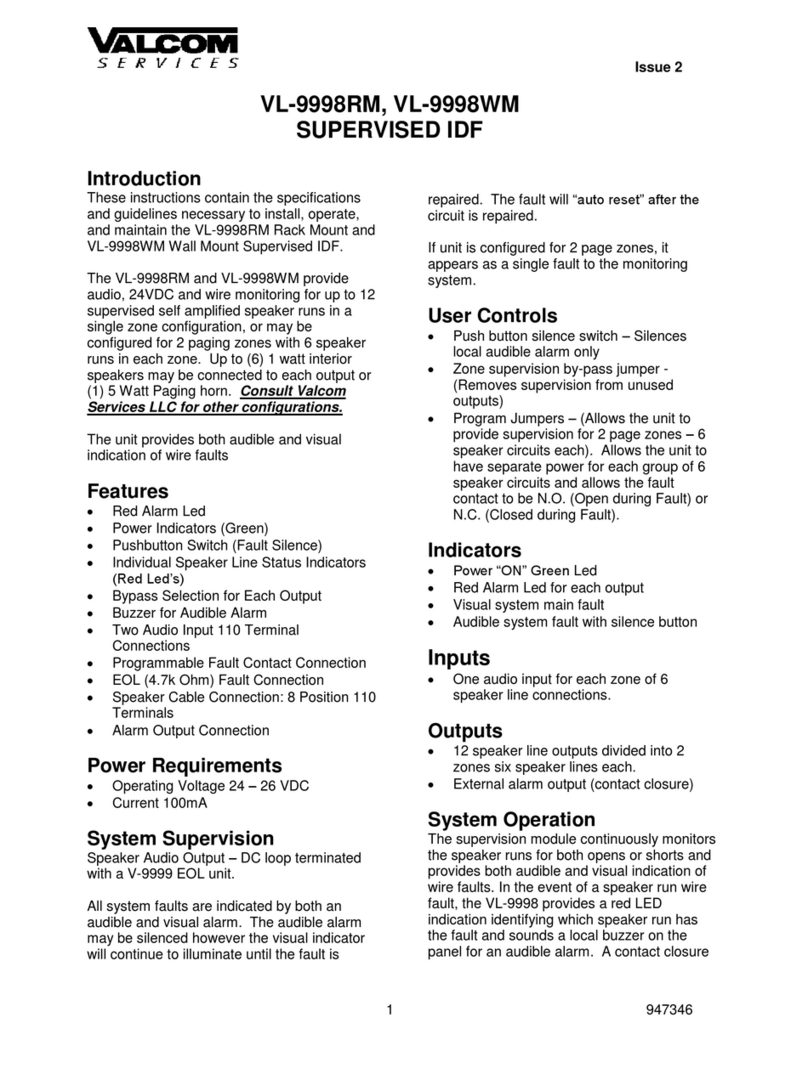
Valcom
Valcom VL-9998RM manual
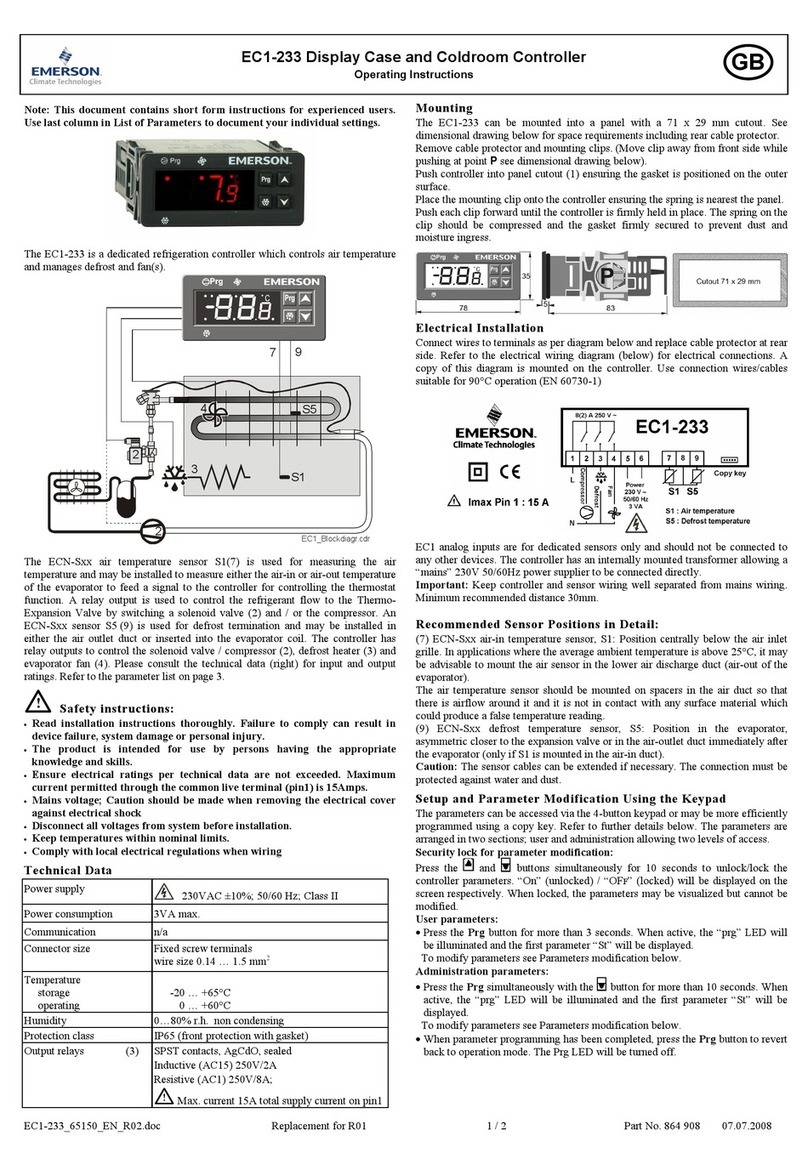
Emerson
Emerson EC1-233 operating instructions
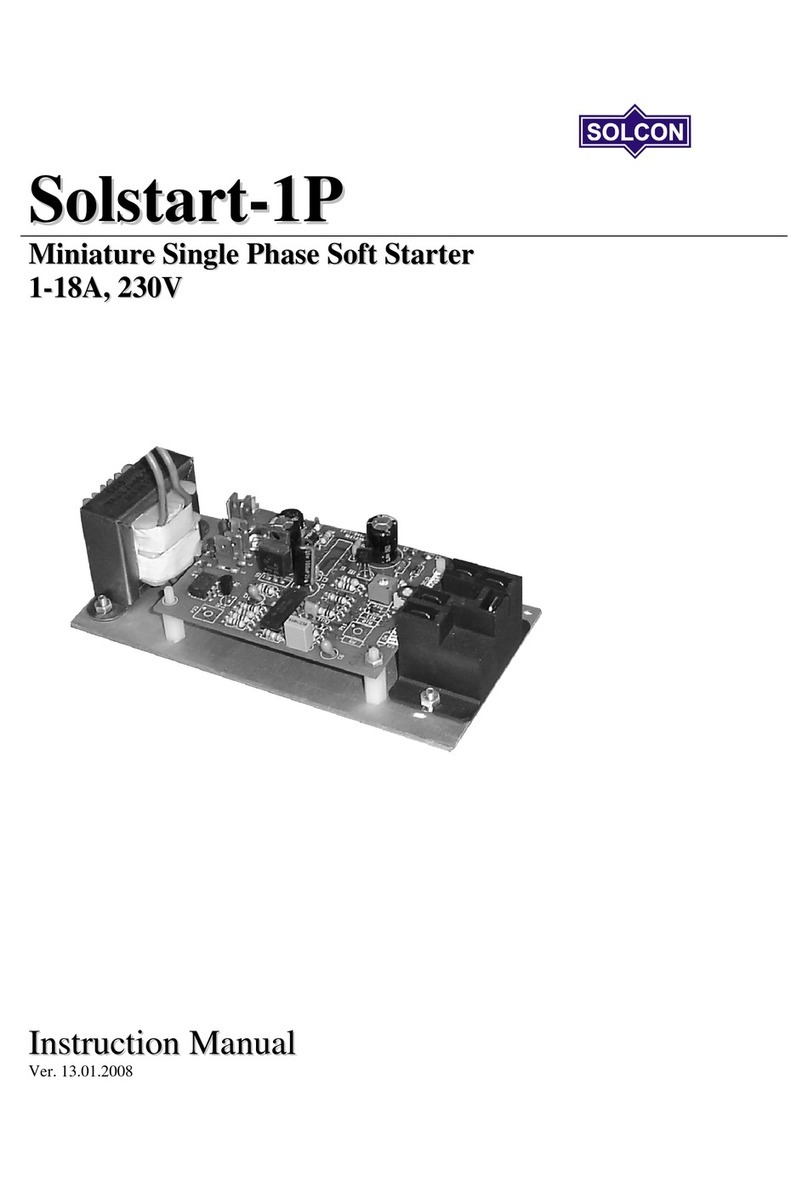
Solcon
Solcon Solstart-1P instruction manual
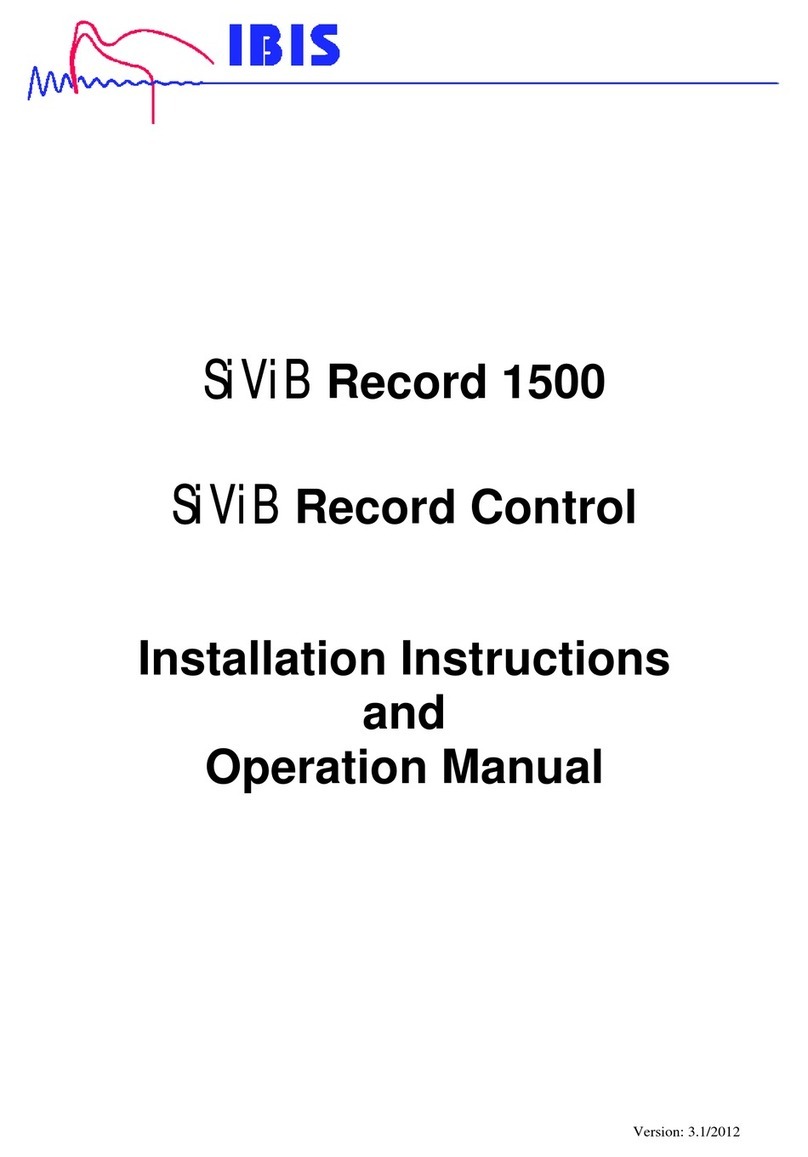
ibis
ibis SiViB Record 1500 Installation instructions and operation manual
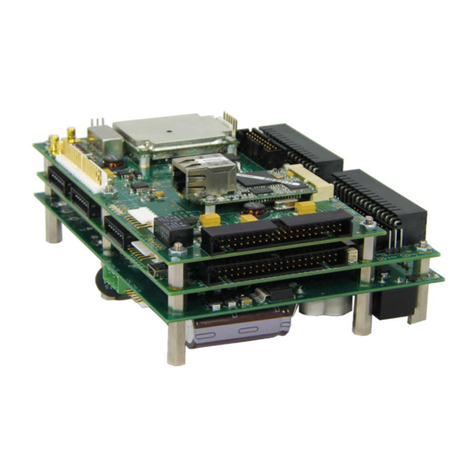
RESEARCH CONCEPTS
RESEARCH CONCEPTS RC4000 Protocol
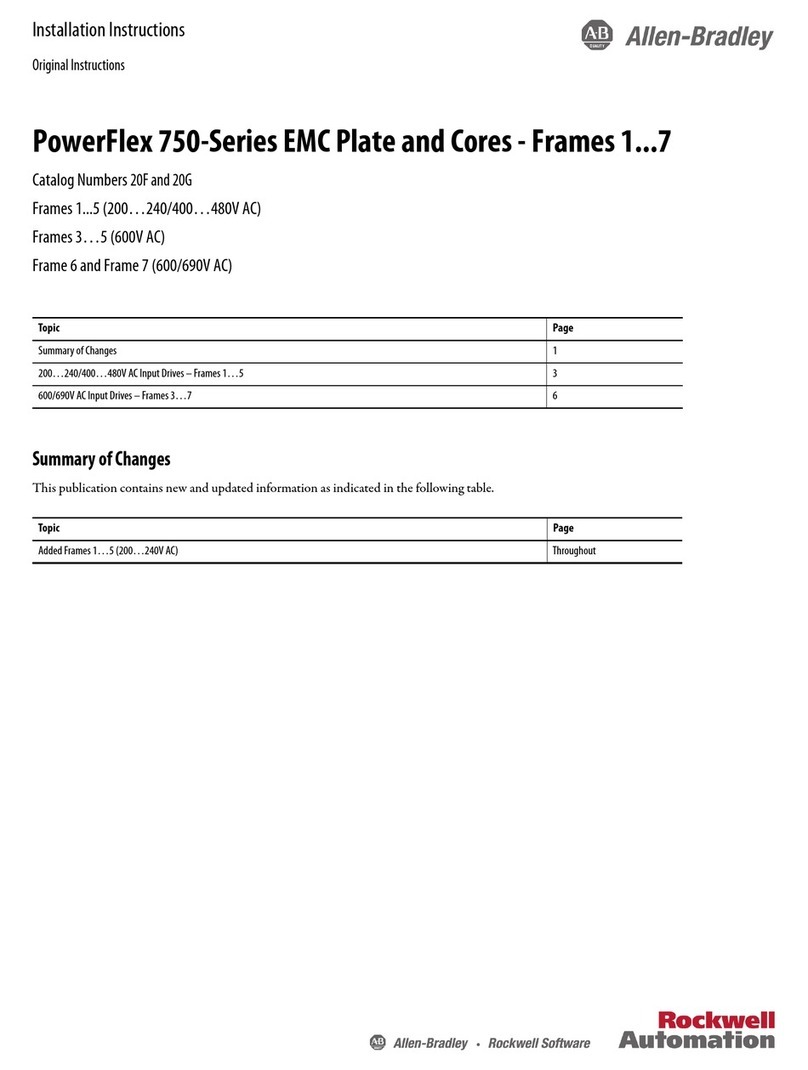
Allen-Bradley
Allen-Bradley PowerFlex 750 Series installation instructions
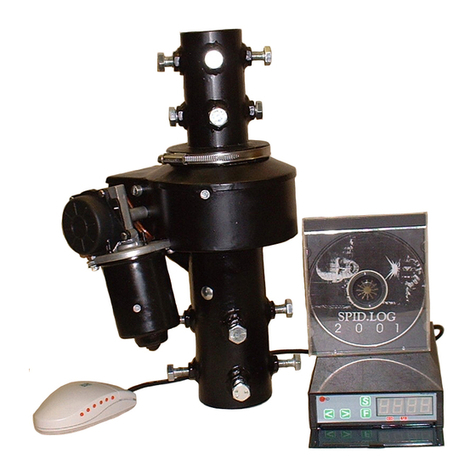
AlfaSpid
AlfaSpid Hy-Gain RAK1C instruction manual
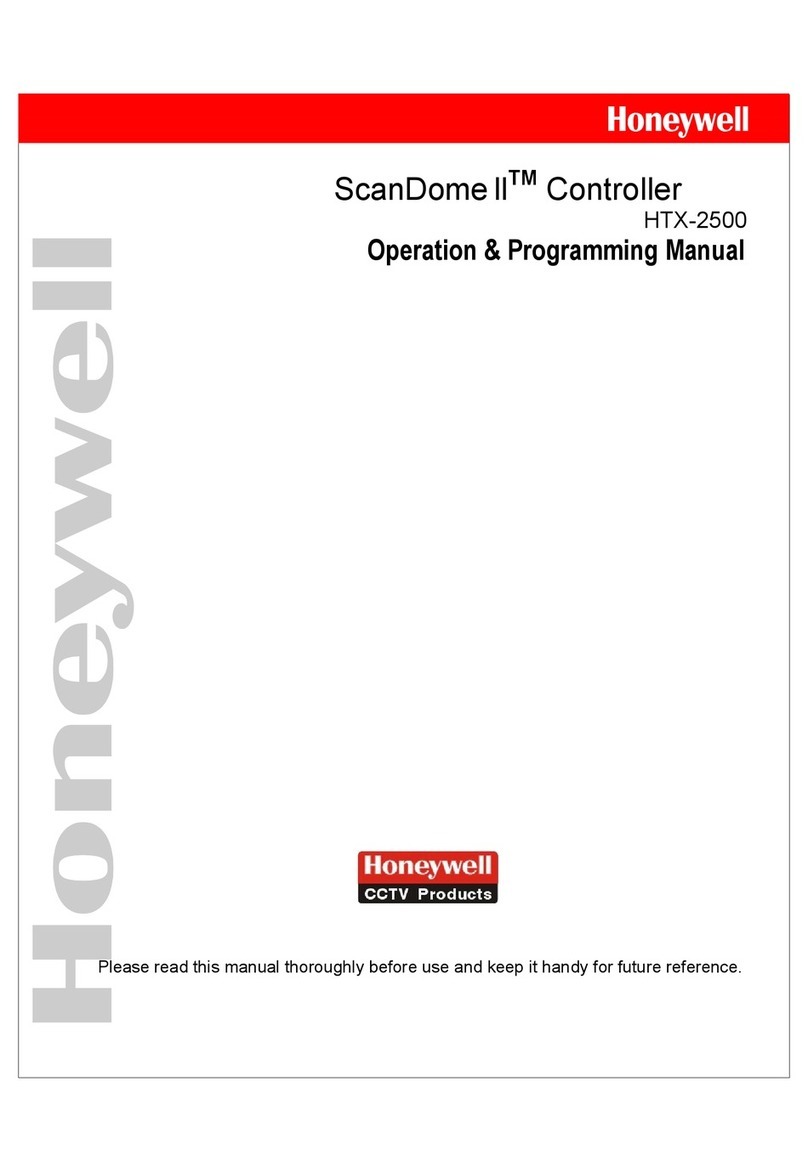
Honeywell
Honeywell Scan Dome ll HTX-2500 Operation & programming manual
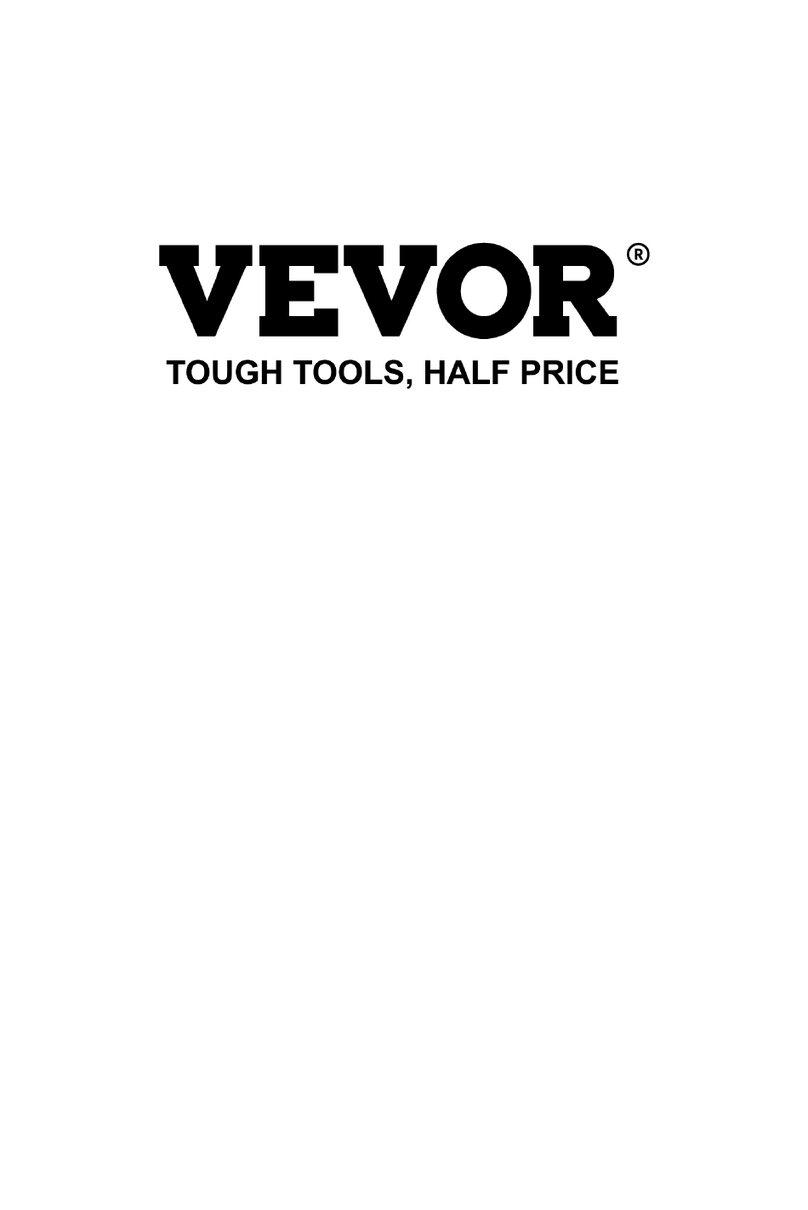
VEVOR
VEVOR AF+AF+AR3000- 03 user manual
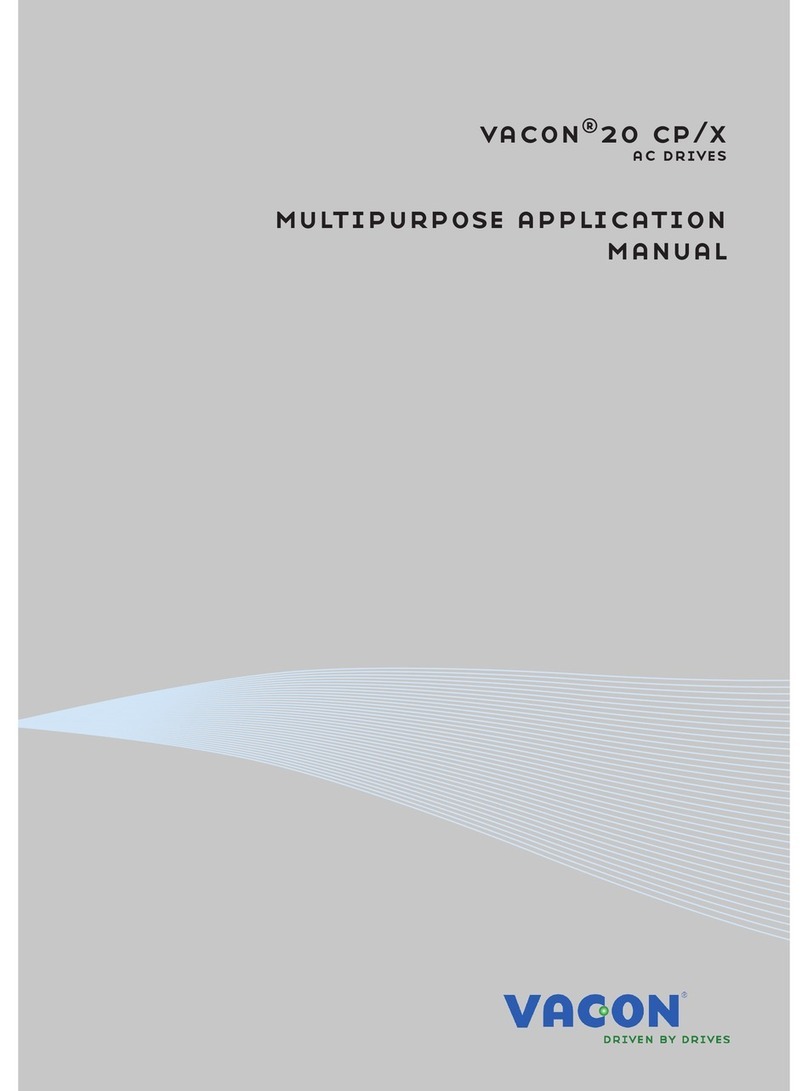
Vacon
Vacon 20 CP/X Applications manual
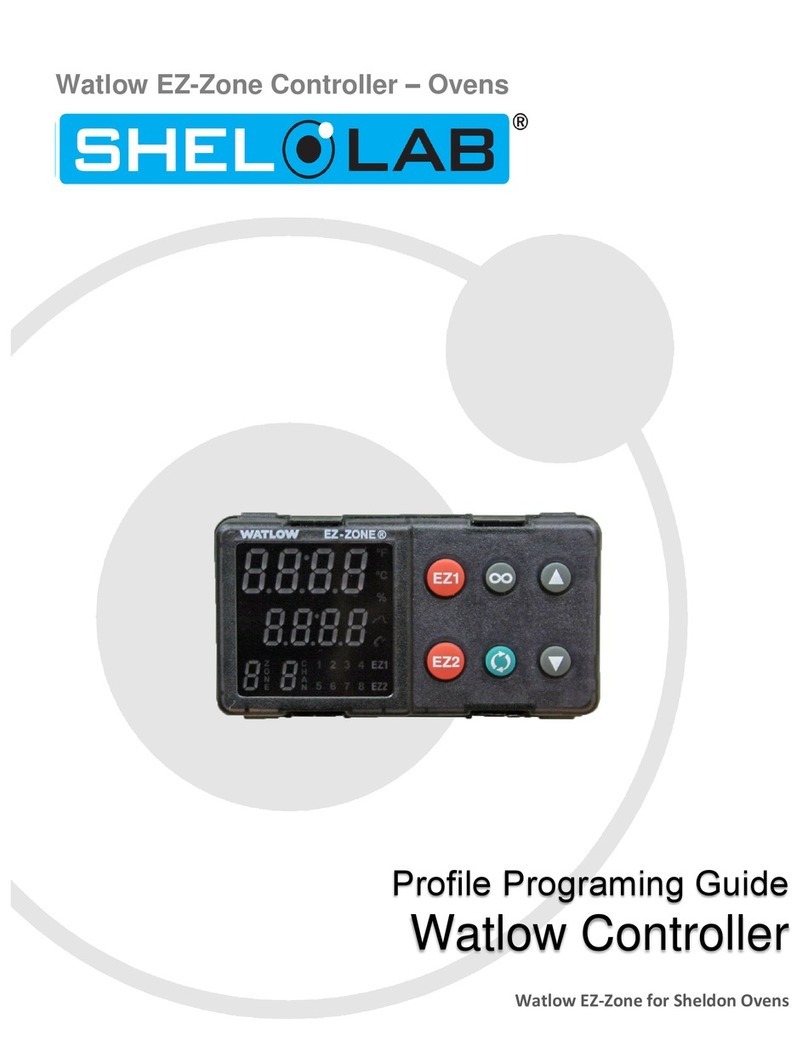
Sheldon
Sheldon Watlow EZ-Zone Programming guide
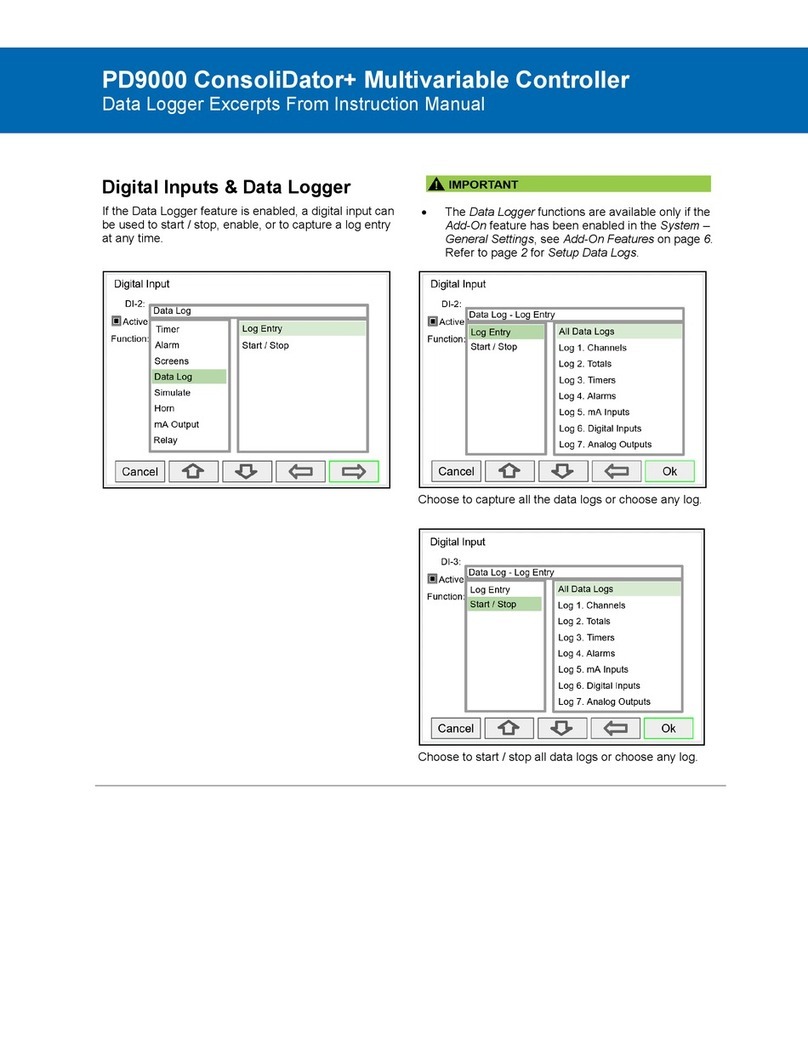
Precision Digital Corporation
Precision Digital Corporation PD9000 ConsoliDator+ instruction manual


